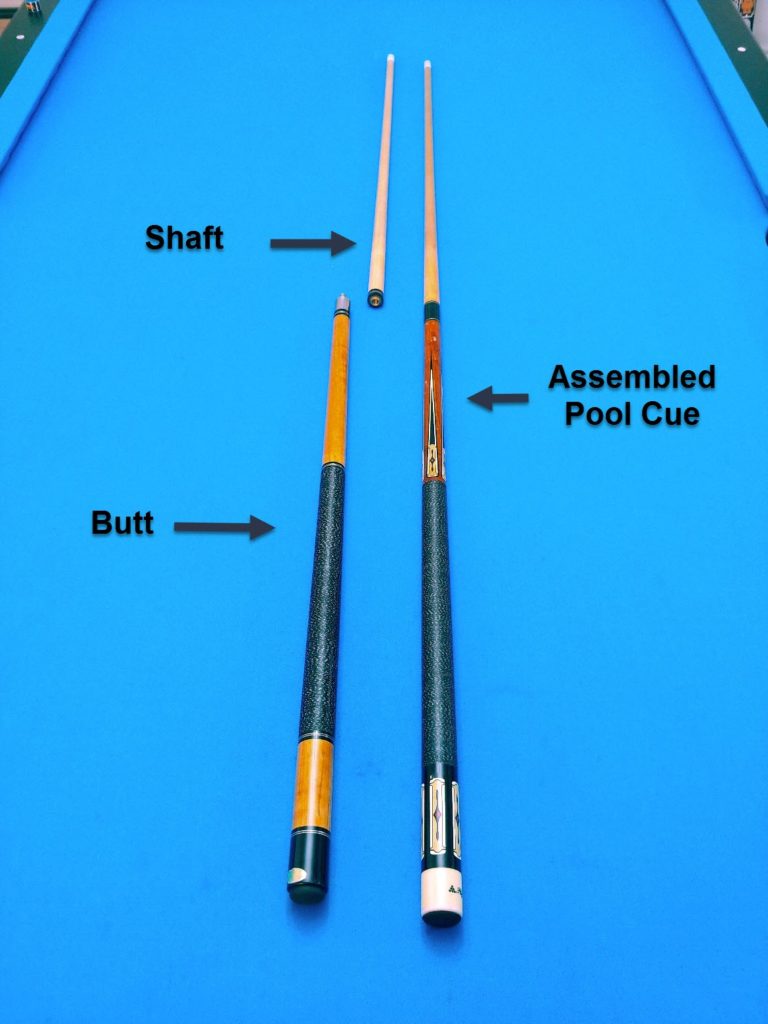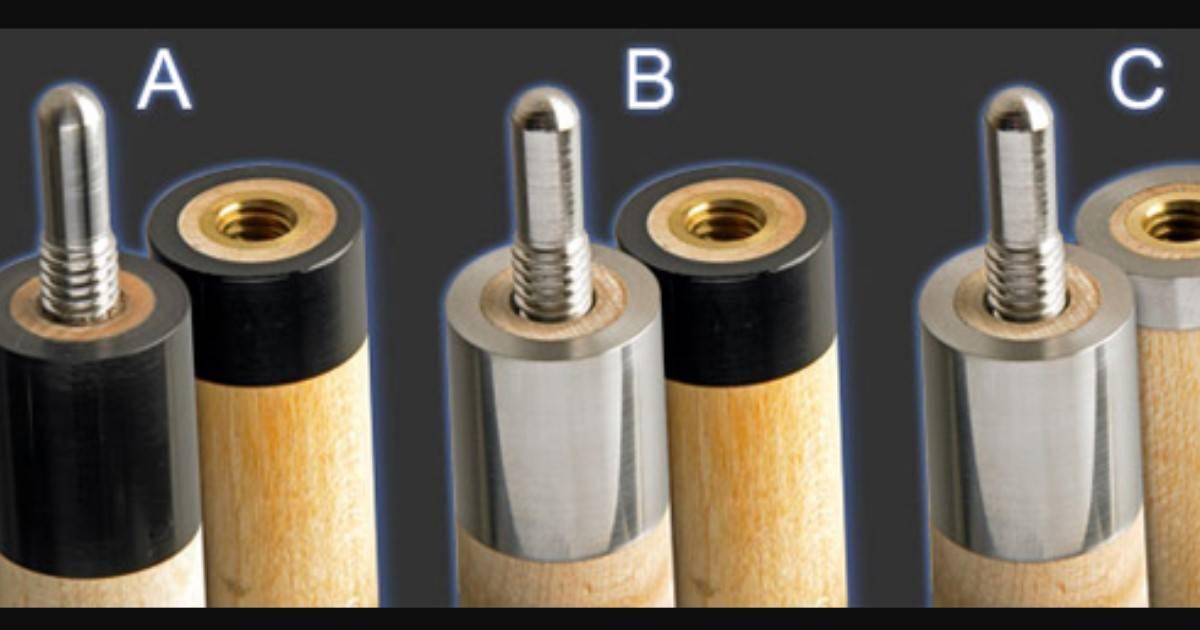Different Pool Cue Types: A Guide For Your Game
Do you think all pool cues are created equal? Think again. The world of pool cues is far more diverse than most realize, with a variety of types designed to enhance your game and cater to different playing styles.
For many casual players, the pool cue is simply a stick to hit the cue ball. However, a deeper understanding of the different types of pool cues available can dramatically improve your game. This guide will delve into the various types of cues, explaining their specific features, and when to utilize them. We'll explore the impact of weight, construction materials, and joint types, arming you with the knowledge to choose the perfect cue for your needs. Whether you're a seasoned player looking to upgrade your equipment or a beginner eager to learn more, this article will provide valuable insights into the fascinating world of pool cues.
| Feature | Details |
|---|---|
| Common Pool Cue Types |
|
| Key Components |
|
| Materials |
|
| Weight |
|
| Tapers |
|
| Joint Types |
|
For further information and details, please visit the following website: pooldawg.com.
- Uncovering The Life And Loves Wally Cox And His Wife
- Lyra Crow Fans A Deep Dive Into The Enthusiastic Community
The world of pool cues is surprisingly intricate. While many might think of the basic cues available in a pool hall, the reality is that a diverse range of options exists, each tailored to specific playing styles and techniques. From the standard playing cue to specialized tools like break and jump cues, understanding these distinctions is crucial for anyone looking to improve their game. The choice of cue isn't merely about aesthetics; it profoundly impacts how a player controls the cue ball, the power they generate, and the overall feel of their shots. This guide provides a comprehensive overview, offering insights into the different types, materials, and design elements that make each cue unique.
The core of a pool cue often begins with the shaft, typically crafted from wood, with maple being the most prevalent choice. The shaft's taper, that gradual reduction in width, is a key factor in a cue's performance. The shaft's gradual reduction in width or thickness. Pro tapers offer a consistent feel, while conical tapers have a more pronounced reduction. The type of wood used and the precision of the taper both influence how the cue interacts with the cue ball.
The tip, made from layers of pressed leather, is another critical element. These are crafted from materials that provide grip on the cue ball and helps to generate the desired spin and control. The ferrule, a ring often made from phenolic resin or a similar material, sits between the tip and the shaft. This part reinforces the tip and can impact the overall feel and performance of the cue.
- Uncovering The Height Of Rue Mcclanahan An Exclusive Measurement
- Unveiling Ashantis Net Worth A Comprehensive Guide
The butt, the lower portion of the cue, contributes significantly to its weight and balance. Butts can be made of wood, composites, or a combination of materials. The weight, ranging from 18 to 21 ounces, and how that weight is distributed along the cue affect the feel in the player's hands and the overall shot accuracy. Some cues feature weight-adjustable systems, allowing players to fine-tune the balance.
Selecting the appropriate pool cue is a personal process. It's about finding the right balance of weight, feel, and performance that aligns with your playing style. The differences between the cues are based on material, construction, weight, and type and these tools can become an integral part of how you play, here is a guide to the common types of pool cues:
Different types of pool cues cater to specific needs. Standard playing cues are the versatile workhorses of the pool world, suitable for most shots. Break cues are engineered for power, with stiffer shafts and often heavier weights to maximize force upon the break. Jump cues, on the other hand, are designed for lifting the cue ball over obstructing balls, usually featuring a shorter length and lighter weight. Snooker cues, with their smaller tips and longer lengths, are tailored for the nuances of snooker play.
The materials used in cue construction significantly impact performance. Maple is a mainstay for shafts, prized for its playability and feel. The butt often incorporates various materials, from exotic woods to composite structures, contributing to the cue's weight and aesthetic. The ferrule and tip materials also make a significant difference; different types provide the right grip and reaction to the cue ball.
The joint of a pool cue is where the shaft and butt connect, and it's a crucial aspect of the cue's feel. Joint styles vary, including wood-to-wood, steel, and composite options. The joint type influences the feedback a player receives during a shot, affecting how vibrations are felt and impacting overall control. A solid joint often provides a more direct feel, while others may absorb some vibration.
The pool and billiard hall sector in the U.S. economy was a substantial $861.8 million industry in 2019, and while the pandemic temporarily slowed down business, pool players are now returning to bars and halls across the country, making this a great time to consider investing in new pool cues. Understanding the differences between cues can lead to a more informed purchase, leading to a better playing experience.
A player should prioritize the feel of a cue over its appearance. If you're purchasing online and don't have the opportunity to test the product yourself, just make sure you've done your research. Choosing the right pool cue joint type can impact your cue's balance and how vibrations are felt in your hand.
Understanding the different types of pool cue tips is important. There are three main types of pool cue tips, and each type has its own advantages and disadvantages. The tips on the end of a pool cue can make a huge difference in how well you play.
The benefits of the right pool cue are numerous. A well-matched cue can make it easier to learn, helping you master the basics of performance. The best pool cues for beginners can effortlessly strike the cue ball.
Choosing the right pool cue also extends to cue cases. Spring loaded pool cue cases and pool cases with backpack straps, and pool cue cases by size are some of the available options. There are 3 pool cue joint types that you should know as a beginner: These pool cue joints are known for their durability and rigidity and provide a very solid feel between the shaft and butt, which can be beneficial for players who prefer a lot of feedback in their strokes.
The problem is, these are all in different cues so it's hard to say 100% if it's the whole cue or the joint that produces the result. Even then small variances from one cue to the next could be considered skewing the results. Different pool cue manufacturers can make vastly different kinds of pool cues, but they all perform the same, right? Pool cues from different manufacturers are made in different ways with different materials, which then can make a big difference when you gather around the pool table.
Predator is famed for designing pool cues that enhance low deflection and precision and their pool sticks are a favorite among players who demand acute accuracy from their equipment. Choosing the right cue is a journey of discovery, a quest for the perfect tool that enhances your potential and elevates your game.
Investing in a good-quality pool cue is a significant decision, and it's essential to explore the variety of options available before making your choice. Take the time to feel different cues, test the weight and balance, and experiment with various joint types. By considering these factors, you'll be able to identify a pool cue that perfectly suits your unique playing style.



Detail Author:
- Name : Lucy Ernser
- Username : wiegand.lewis
- Email : nora.gaylord@nicolas.com
- Birthdate : 1985-03-07
- Address : 83396 Morissette Prairie Port Rosannamouth, WI 96997
- Phone : +1 (520) 627-1465
- Company : Marquardt Group
- Job : Financial Specialist
- Bio : Ut laborum non non quibusdam. Placeat sit non doloribus quia non. Dignissimos itaque velit laboriosam.
Socials
linkedin:
- url : https://linkedin.com/in/walshm
- username : walshm
- bio : Consectetur ullam optio ipsum est ut.
- followers : 420
- following : 862
twitter:
- url : https://twitter.com/mwalsh
- username : mwalsh
- bio : Magnam sit quis quis ab veritatis. Quis hic ipsa sed quis reiciendis voluptates aut. Animi molestias nam architecto aut reprehenderit tenetur.
- followers : 4497
- following : 2633
tiktok:
- url : https://tiktok.com/@walsh2005
- username : walsh2005
- bio : Quisquam ut nostrum qui non voluptatem fuga quibusdam.
- followers : 1470
- following : 268